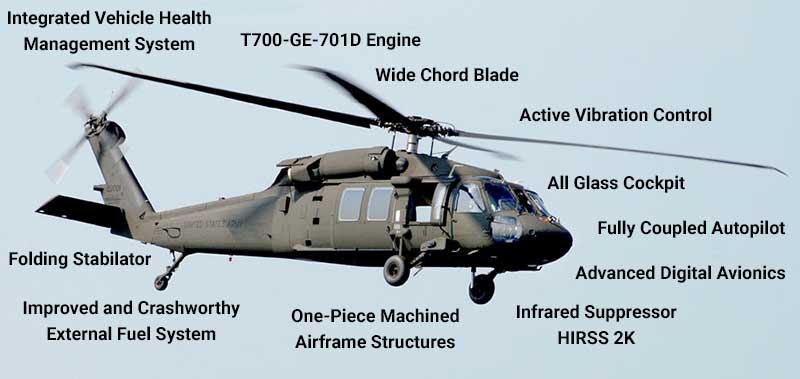Opening Peak Performance: UH 60 Helicopter Upkeep Overview
Opening Peak Performance: UH 60 Helicopter Upkeep Overview
Blog Article
Navigating Uh 60 Helicopter Laws and Compliance Requirements

Regulatory Framework Overview
The regulative structure governing UH-60 helicopter procedures includes a complicated set of guidelines and standards developed by air travel authorities. These regulations are designed to make certain the secure and effective procedure of UH-60 helicopters in different environments. The Federal Aeronautics Management (FAA) plays a central duty in developing and imposing these regulations, which cover a variety of operational facets, including airworthiness standards, pilot credentials, maintenance needs, and functional procedures.
Conformity with these policies is important for helicopter drivers to preserve the highest possible degrees of safety and functional integrity. Failing to follow these laws can result in significant repercussions, consisting of mishaps, injuries, and regulatory permissions. Therefore, helicopter drivers must remain informed regarding the most up to date regulative growths and guarantee that their procedures are in complete conformity with all appropriate regulations and standards.
Airworthiness Directives and Assessments
Amidst the regulatory framework governing UH-60 helicopter operations, an important emphasis exists on compliance with Airworthiness Directives and conducting extensive assessments to maintain security requirements and functional dependability. Airworthiness Regulations (ADs) are provided by aviation authorities to address hazardous conditions in aircraft, consisting of the UH-60 helicopter, and required certain activities to be taken by operators or owners. Conformity with ADs is compulsory, and failure to stick to these directives can cause significant effects, including grounding of the aircraft.
Normal inspections are extremely important to guaranteeing the airworthiness of UH-60 helicopters. By sticking to a stringent examination regimen, drivers can spot and resolve potential concerns promptly, consequently enhancing the security and integrity of UH-60 helicopter operations.
Pilot Certifications and Training

Pilot training for UH-60 helicopters is comprehensive and covers a wide variety of subjects, including airplane systems, emergency treatments, navigating, and mission-specific training. Furthermore, pilots undertake simulator training to practice numerous emergency circumstances in a controlled atmosphere. This training helps pilots establish the essential skills to take care of challenging read review scenarios effectively.


Furthermore, see this website recurring training and specialist advancement are necessary for UH-60 pilots to stay current with the most recent regulations, modern technology, and ideal methods. By investing in pilot qualifications and training, drivers can improve security, optimize efficiency, and make sure compliance with regulatory needs in the procedure of UH-60 helicopters.
Operational Limitations and Needs
Pilot credentials and training function as the foundation for recognizing the operational limitations and needs connected with UH-60 helicopter operations (uh 60). These functional limitations are established to make sure the security of the crew, guests, and the aircraft itself. Functional restrictions may consist of factors such as weather, weight constraints, altitude constraints, and functional boundaries. It is critical for pilots to be skilled in these restrictions to make enlightened decisions throughout flight procedures. Furthermore, conformity demands, such as sticking to particular trip paths, interaction procedures, and emergency situation procedures, are crucial for preserving functional security and governing compliance. Pilots need to remain current with all operational constraints and requirements with normal training, briefings, and evaluates to minimize risks and make sure secure and efficient UH-60 helicopter operations. By prioritizing adherence to these functional standards, pilots can boost the overall security and performance of their goals while upholding regulative requirements.
Emergency Situation Treatments and Compliance Testing
Reliable emergency treatments and extensive compliance screening are crucial parts of maintaining functional safety and governing adherence in UH-60 helicopter operations. Normal compliance testing ensures that the helicopter satisfies all governing demands established forth by aviation authorities.
Conformity testing likewise extends to devices onboard the UH-60, such as interaction systems, navigation instruments, and safety and security gear. Making sure that all equipment is working appropriately and meets regulative criteria is important for secure procedures. Additionally, compliance screening might involve simulations of emergency circumstances to assess the crew's action and the helicopter's efficiency under stress. By prioritizing emergency situation treatments and conformity testing, UH-60 operators can alleviate threats and show their dedication to safety and regulatory compliance.
Conclusion
Finally, adherence to regulative framework, compliance with airworthiness regulations, pilot certifications and training, operational limitations, and emergency procedures are essential for navigating the regulations and needs of running a UH-60 helicopter. uh 60. It is critical for drivers to focus on security and make sure full compliance with all applicable regulations to keep the airworthiness and functional stability of the aircraft
Navigating the governing landscape bordering UH-60 helicopter procedures demands a nuanced understanding of view publisher site the intricate internet of policies and compliance requirements.Conformity with these laws is crucial for helicopter drivers to maintain the highest degrees of security and operational honesty.In the middle of the regulative framework governing UH-60 helicopter procedures, an essential emphasis lies on conformity with Airworthiness Directives and carrying out comprehensive inspections to promote security standards and functional reliability.Reliable emergency situation procedures and detailed conformity testing are essential elements of maintaining operational safety and regulative adherence in UH-60 helicopter operations. Normal compliance screening guarantees that the helicopter fulfills all regulative needs set forth by aeronautics authorities.
Report this page